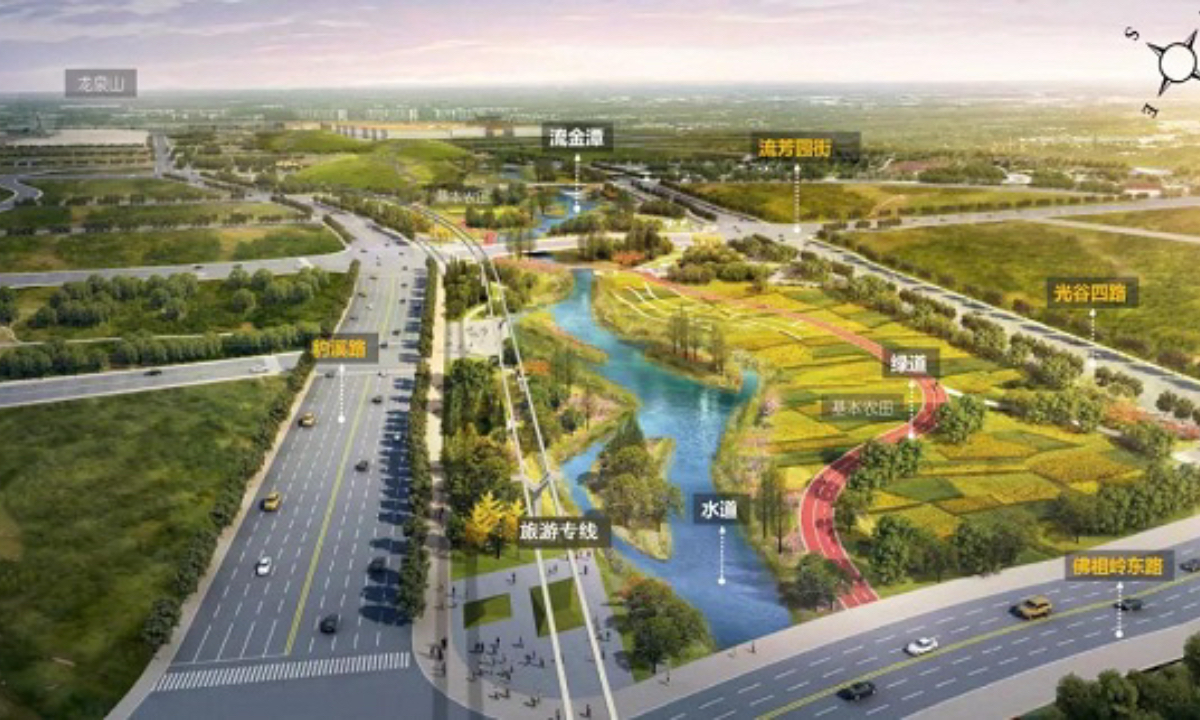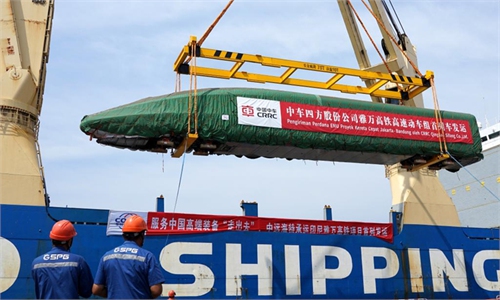
A rendering of a special sky-train tourism route in the Optics Valley of China. Photo: Screeshot of website.
China’s first commerce sky-train rolled off the production line at the factory of CRRC Sifang Co in Qingdao, East China’s Shandong Province on Friday, chinanews.com reported.
Designed for the tourism sightseeing project for Optics Valley of China (OVC) in Wuhan, Central China's Hubei Province, the train has a maximum speed of 70 km/h and can accommodate as many as 200 passengers, making it China’s first sky train for commercial operation.
The sky train has adopted multiple cutting-edge technologies that support the automatic driving and fuse the concept of carbon peak and neutrality.
“The whole operation of the vehicle is automatically controlled, meaning it can start, park and open and close the doors on its own, without manual operation. The driver only needs to deal with emergencies,” CRRC Sifang said.
The train is also designed to lower the carbon emission. It is able to reduce the energy consumption per 100 km per capita by 15 percent through more efficient and energy saving permanent magnet motor and variable frequency air conditioner, said CRRC Sifang.
In addition, a number of methods are taken to ensure the safety of the train. For example, it is able to pull itself to the nearest station in case of power failure. The train also adopted the most stringent international fire prevention standards in the world to ensure the fire safety of vehicles.
It is expected that the sky train will be a new tourism attraction for Wuhan and bring an exciting riding experience for passengers with those cutting-edge technologies and a 270 degree view on the train.
The train will be running on a tourism sightseeing route within the Optics Valley Central Ecological Corridor that stretched 26.7 kilometers. The first phased project is 10.5 kilometers long and has six stations.

